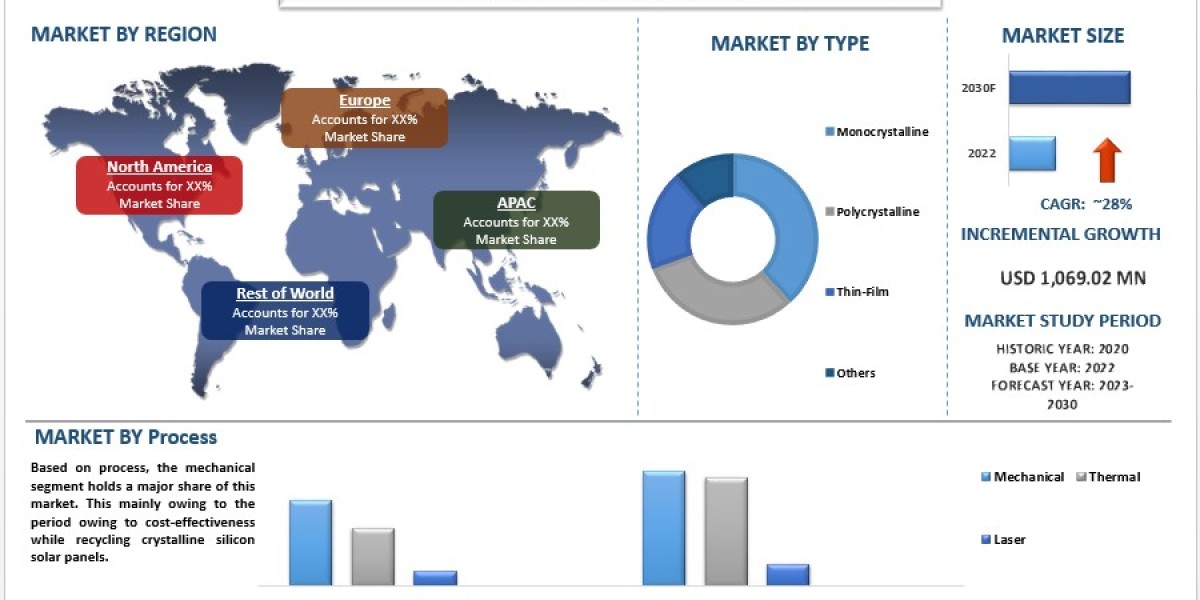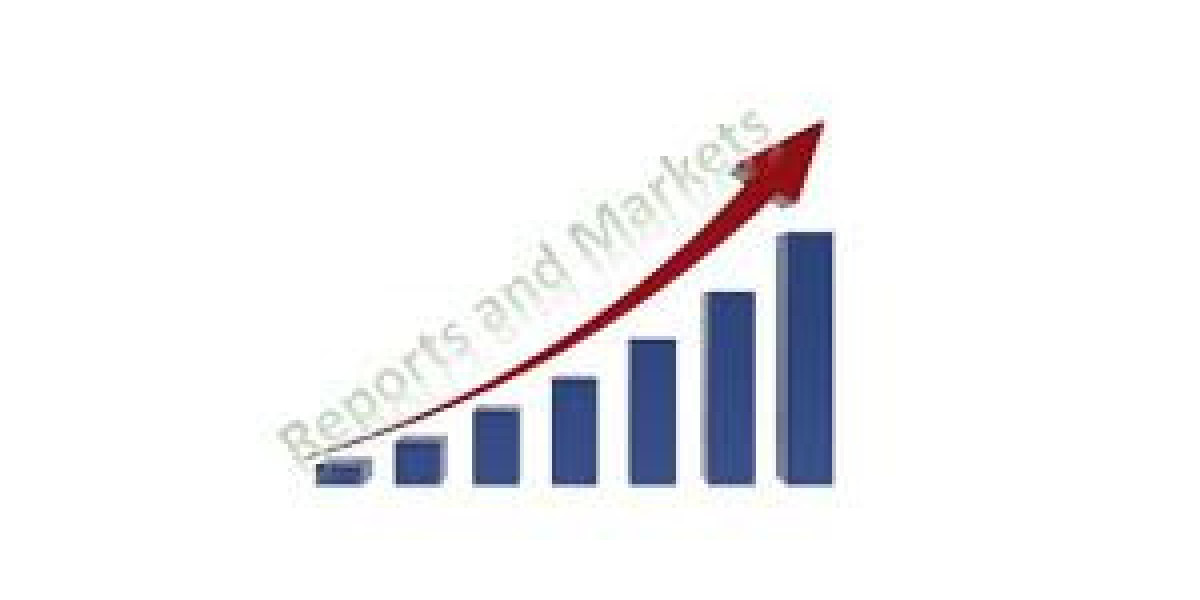According to a new report by UnivDatos Market Insights, Solar Panel Recycling Market is expected to reach USD 1,069.02 Million in 2030 by growing at a CAGR of 28%. As the world's population continues to grow, the energy demand is also increasing, and so are the capacities of solar installations. These solar panels have an average lifespan of 25 to 30 years, which means these panels will produce a tremendous amount of waste when decommissioned. In the present scenario, only 10% of decommissioned solar panels are recycled, meaning the rest are just disposed of in landfills.
For instance, according to IRENA, the cumulative waste volumes of EOL modules in a regular loss scenario were projected to be 100,000 tons in 2020 and 1.7 million tons by 2030, which is expected to reach 60 million tons by 2050. These numbers are much higher when combined with early losses.
Request To Download Sample of This Strategic Report - https://univdatos.com/get-a-free-sample-form-php/?product_id=53779
Currently, three methods to recycle these panels are mechanical, thermal, and laser. The automated process is majorly used to recycle these panels due to economic, environmental, and operational factors. This traditional recycling method has less cost and does not release harmful gases in comparison with other recycling processes. Majorly, the companies present in the North American and European regions practice mechanical recycling processes.
On the other hand, the thermal process recovers more than 84% of the solar panel's weight and can recycle up to 98% of unbroken cells. This process requires a lot of heat, as solar panels are heated to above 420 degrees Celsius. Even though the process is energy-intensive, up to 85% of the cells recovered can be reused, reducing the energy consumption during manufacturing of the new PV modules by up to 70%. Due to its great efficiency and simplicity, the process is widely utilized for commercial PV module recycling. However, the release of toxic gases and the high cost associated with the process are restraining its wide adoption. Majorly, the companies present in the Asia (Japan and Australia) region practice thermal recycling processes.
A wide range of investments for advancement in solar panel recycling is further escalating the market opportunities. Some of the recent investments are:
· In March 2023, SOLARCYCLE announced that it had received an investment of USD 30 million, including infrastructure and equity financing, to scale the company’s solar panel recycling capacity and material manufacturing capacity.
· In February 2023, ROSI (a French solar panel recycling startup) announced that it had raised USD 8 million from the European Innovation Council, ITOCHU Corporation, and EIT InnoEnergy. This will allow ROSI to develop its first PV recycling site in France. This plant will be able to recycle 3,000 tons of PV panels.
Asia Pacific is expected to experience a significant growth rate in the projected period. The primary factors driving this growth are the increasing implementation of solar panels, the necessity of clean energy, and growing government initiatives to increase the adoption of sustainable energy. Furthermore, the region is anticipated to produce a large amount of solar panel waste by 2030, majorly due to countries including China, Japan, Australia, India, and South Korea. Although the solar waste production in the region is the highest, there still needs to be nationwide PV recycling regulations in the region. The governments in the region have started showing concerns related to solar panel waste and have initiated various incentives to promote solar panel recycling. Moreover, countries including Japan, South Korea, and Australia have initiated solar panel recycling in a small scale. These governments have already included solar panel waste in the electronic waste category and have mandated proper disposal of these decommissioned panels. Further, according to the National Development and Reform Commission, China has targeted to build a solar panel recycling mechanism by 2025, and the government will also improve its solar panel recycling standards.
Ask for Report Customization - https://univdatos.com/get-a-free-sample-form-php/?product_id=53779
Browse Related Reports:
· Carbon Offset and Carbon Credit Trading Service Market
· Power Factor Correction Market
· India Gas Insulated Switchgear Market
Conclusion
As global solar panel waste increases, the government and manufacturing companies invest heavily in building their recycling capacities. The solar panel recycling market is poised for significant growth. It is expected to grow exponentially over the next five years, driven by factors such as increased solar panel waste, raising concerns about disposing of these panels into landfills, opportunities for creating a circular economy, and a growing focus on sustainable practices. Recycling solar panels offers numerous benefits, including reducing the need for raw materials to manufacture new panels and preventing the hazardous substances present in these solar panels. In the current scenario, the major issue with the recycling process is that it could be more economically profitable. Still, as technology continues to evolve and new or more efficient processes are being developed, we can expect more penetration in solar panel recycling. Key solar panel recycling market players include First Solar, Solarcycle, Inc., and We Recycle Solar. These companies are investing heavily in expanding their manufacturing capacities.



